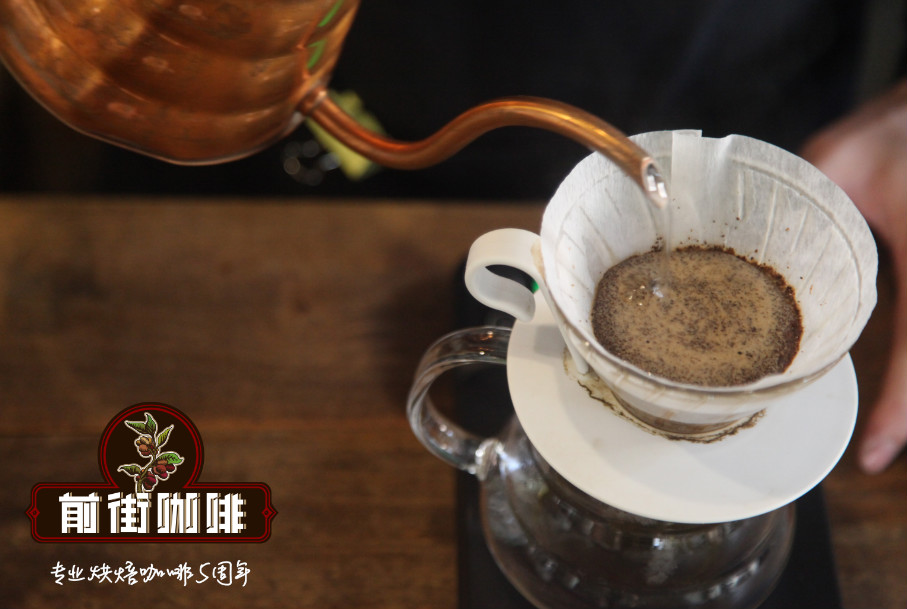How should I drink coffee from sidamo guji region? What are the characteristics of sidamo guji production area?

Professional coffee knowledge exchange more coffee bean information please follow the coffee workshop (Wechat official account cafe_style)
Ethiopia is the country where coffee was first discovered. Today, there is still a lot of wild coffee for farmers to harvest in the virgin forest. Ethiopia is a country with poverty, drought and civil war. However, it is still the most important coffee producer in terms of coffee quality and output, and it is also the best and top coffee producer in the past one or two years.
The administrative region of Ethiopia is divided into four grades, the order from big to small is Region, Zone, woreda and kebele. Most of the place names of raw coffee beans are named according to this rule. Guji producing area is located in the southeast of Yejia Sheffield, which belongs to the regional type of coffee beans in Oromia Region → Guji Zone. Just as Yejia Xuefei became well-known after its fame, it became an independent secondary production area of Sidamo (Guji Zone). Guji production area is more favored by buyers in Sidamo province in recent years.
The production area of Guji Zone has always been a production area worthy of considerable attention, and the development in recent years has also confirmed that the rise of Guji production area is indeed one of the important trends in the development of Ethiopia in recent years. In addition to the beans from the larger producing areas, such as Humbera and Shakespeare, there are also excellent beans from processing plants or even single estates, which are beyond the reach of the traditional Yegashafi producing areas. What's more, in terms of innovative treatment, there will also be honey treatment batches. In addition to the recent focus of Gesha Village, the Guji producing area has also become an important hot spot. To understand the trends in Ethiopia, Guji can be said to be a key point that can not be ignored. Kercha is located in a tribal village in the Guji Zone producing area. The farmers in the natural village mainly grow coffee and other small crops to earn a living. In order to make a living, the Kercha cooperative, which combines the families of small coffee farmers, will have a processing farm, and the opposite service will naturally be dominated by local coffee farmers.
Guji Zone has always been one of the most popular sponsors of the Dutch Red Cherry Project. As a result of the exchange of information, the production technology of this area has naturally benefited and improved. The Red Cherry Project (Operation Cherry Red) is led by the Dutch company Trabocca, and half of the funding is funded by the Dutch government. Since 2005, the Dutch company Trabocca has partnered with many small coffee cooperatives in Ethiopia to teach and help encourage small coffee farmers to improve post-processing techniques starting with red fruit harvest.
Such as washing, sun or fermentation treatment to improve the quality management of coffee. During the harvest season, Trabocca invites selected coffee farmers' organizations and producers to participate in the project. Harvest micro-batches of coffee (about 1500 to 3000kg) and carefully select 100% ripe red coffee cherries by hand in batches (so it is called the Red Cherry Project). Finance provided by Trabocca,
Resources such as equipment and technology assist farmers and promise to purchase quality specifications that meet the required standards according to the standard process (SOP) and will be purchased at an excellent price. The spirit of the project is a bit like the nature of the contract.
Ethiopian coffee can be divided into two treatments. Washing treatment method II. Natural sun treatment. Nowadays, every cooperative or even a small coffee farm in Ethiopia produces coffee beans of the above two treatments at the same time, whether it is the well-known Yegashev producing area in Taiwan or the Sidamo producing area. Not only that, in Ethiopia, which is currently the country with the fastest development of coffee, it not only makes coffee different in treatment, but also makes aroma and taste different due to the adjustment of different techniques and processes. Yegashev sun-dried beans are different from Sidamo sun-dried beans in aroma, which often gives people an illusion. Ethiopian coffee beans washed with water. The aroma is mild, low-sinking, citric acid is soft and low-key, the consistency of flavor is high, and the taste of Ethiopian coffee beans is won by taste, while the strong aroma of Ethiopian coffee beans shows the weak and inconspicuous flavor of citric acid, the complex and changeable flavor is characterized by flower or fruit fragrance.
END
Important Notice :
前街咖啡 FrontStreet Coffee has moved to new addredd:
FrontStreet Coffee Address: 315,Donghua East Road,GuangZhou
Tel:020 38364473
- Prev

What is the most suitable roasting degree for Hawaiian kona coffee? How do you drink Hawaiian Kona coffee?
Professional coffee knowledge exchange more information about coffee beans please follow the coffee workshop (Wechat official account cafe_style) Kona coffee is produced in Hawaii. A rare species that can only be planted on volcanic slopes. Taste strong, mellow, and slightly with a wine aroma, moderate sour taste, very special flavor. As the output is decreasing, the price is catching up with Blue Mountain Coffee. Kona coffee beans are produced in Charlotte.
- Next

How should I drink coffee with orange fragrance in the sun Ye Jia Xuefei Qisha processing plant?
Professional coffee knowledge exchange more coffee bean information please follow coffee workshop (Wechat official account cafe_style) Ethiopia is the country where coffee was first discovered, there is still a lot of wild coffee picked and used by farmers in the virgin forest. Ethiopia is a country with poverty, drought and civil war, but it is still the most important coffee in terms of coffee quality and output.
Related
- Detailed explanation of Jadeite planting Land in Panamanian Jadeite Manor introduction to the grading system of Jadeite competitive bidding, Red bid, Green bid and Rose Summer
- Story of Coffee planting in Brenka region of Costa Rica Stonehenge Manor anaerobic heavy honey treatment of flavor mouth
- What's on the barrel of Blue Mountain Coffee beans?
- Can American coffee also pull flowers? How to use hot American style to pull out a good-looking pattern?
- Can you make a cold extract with coffee beans? What is the right proportion for cold-extracted coffee formula?
- Indonesian PWN Gold Mandrine Coffee Origin Features Flavor How to Chong? Mandolin coffee is American.
- A brief introduction to the flavor characteristics of Brazilian yellow bourbon coffee beans
- What is the effect of different water quality on the flavor of cold-extracted coffee? What kind of water is best for brewing coffee?
- Why do you think of Rose Summer whenever you mention Panamanian coffee?
- Introduction to the characteristics of authentic blue mountain coffee bean producing areas? What is the CIB Coffee Authority in Jamaica?

